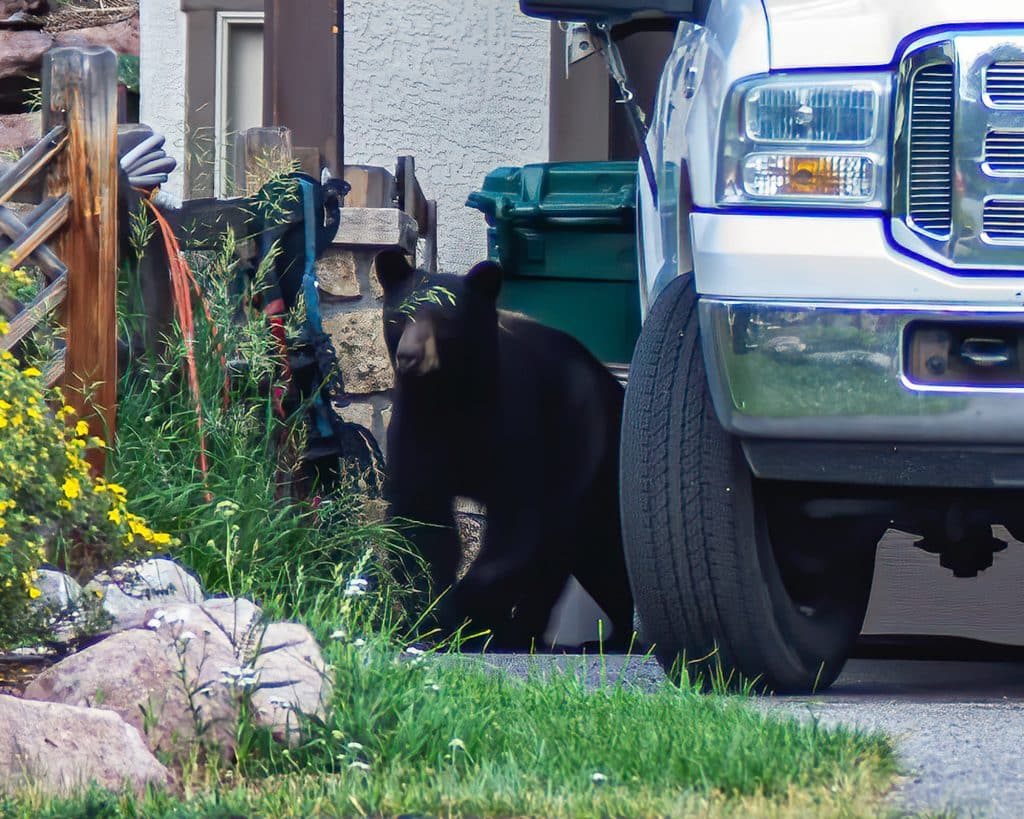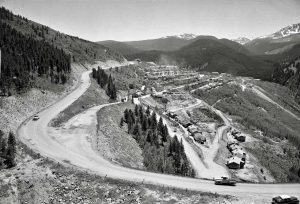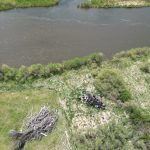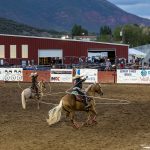Bear necessities: Everything you need to know to avoid attracting bears and keeping them out of trouble
Wildlife Roundtable

Rick Spitzer/For the Vail Daily
We have all heard the phrase “Bear Aware,” but do we really know what that means? Do we know why it is important?
The communities where we live have wildlife close by. We usually think about wildlife as what we might find in the remote mountainous areas of the state. Many people are surprised when they find out that wildlife can even be found in and around the towns of Colorado.
We have a need to respect wildlife and remember that “wildlife” is wild. There are times and situations where wildlife can be dangerous. Most of the time that happens because people fail to leave the animals alone or respect their wild nature. Some human behavior can attract wildlife and lead to problems.

Courtesy photo
Wildlife has a need for space. When you encounter any wildlife, it is good to remember the “Rule of Thumb.” Hold up your hand at arm’s length and stick out your thumb. If you cannot cover the animal completely with your thumb, you are already too close. An animal’s behavior may change dramatically when you are in their space. The consequences of that behavior change may not result in a positive outcome for you or the wildlife.
If you are with your dog, a wild animal’s behavior may change even more dramatically at even a greater distance. Some wildlife is hardwired to look at canines, of any size, as a threat. What might happen next might not be good for you, your dog, or the wildlife you encountered. Having control of your pet in these situations is vital.

Support Local Journalism

Rick Spitzer/For the Vail Daily
Encounters with wildlife are a concern, but there are other things that we do that can have significant impacts on wildlife. One of the things that we can do to reduce negative encounters focuses on bears, and that is where being “Bear Aware” can be critical for the safety and well-being of the bears and yourself.
Bears and you
Black bears (there are no grizzlies) in Colorado may be black, brown, blond, or cinnamon.

Rick Spitzer/For the Vail Daily
Wildlife managers have identified several things that we can do to reduce the negative impacts of bears in our communities. What can you do to be “Bear Aware?”
If you encounter a bear on the trail:
- If you see a bear before it notices you, stand still and don’t approach it
- Move away quietly in the opposite direction
- Don’t run; running may trigger a chase response
- If the bear gets too close, stand your ground
- Make yourself look bigger by raising your arms and jacket, and/or standing on a rock or stump
- Yell “Hey bear” loudly
- Back away only when the bear stops its approach
- If a bear attacks, lay flat on your stomach, and spread your legs apart
- Cover your head and neck with your hands and arms
- Keep your pack on, it will help protect you during an attack
- Stay still and don’t make any noise — you’re trying to convince the bear that you aren’t a threat
What’s on the menu
There are a lot of encounters with bears in trash, in homes, and outbuildings, but bear attacks in Colorado are rare. Only four fatal bear attacks have been recorded since 1971.
Bears are omnivores — they will eat just about anything that looks or smells good to them. They can do this because they have a relatively unspecialized digestive system compared to strict carnivores. They have an elongated digestive tract that allows them to digest vegetation as well as meat.

Rick Spitzer/For the Vail Daily
What do bears eat in the wild? Any high-quality food items that have a high nutritional value and a low foraging effort are on the menu. The availability of those food items is influenced by annual and seasonal variations in those foods. Black bears can kill deer and the young of many hoofed animals. Their diet includes meat, fish, larvae, insects, and carrion. That diet can include livestock, pet food, and even your pets.
In addition, there are many plant sources for food including succulent plants, roots, grass, berries, fruits, and honey. Your landscaping, gardens, and fruit trees may include many of these foods.

BlackBear0973
Because of this wide-ranging diet, bears have a lot of options when they find your house. They find your house, cars, and trash cans because of an incredible sense of smell.
Black bears have a large nose and nasal cavity. It is 100 times larger than a human nose. It is believed that a black bear has a sense of smell more than seven times that of a bloodhound. Bears may have the most sensitive sense of smell in the animal kingdom. They can detect the smell of food sources from miles away. Think about that next time you are camping, hiking, or backpacking.
Black bears have entered houses and cars in search of food that they probably detected from some distance. There are many examples of bears that were able to enter cars, perhaps looking for those spilled French fries between the seats, only to have the car door close behind them. They can destroy the interior of the vehicle trying to find the way back out. Don’t leave food, trash, coolers, air fresheners, or anything that smells in your vehicle. Lock all vehicle doors.
Bears have entered houses through unlocked doors and open windows only to destroy refrigerators and pantries looking for the foods they can smell. Keep all bear-accessible windows and doors closed and locked, in homes, sheds, and garages. Unlocked doors with handles instead of doorknobs are a snap to open, not that a door knob will stop them. Remember that black bears can climb trees, so they can climb your deck supports.

Rick Spitzer/For the Vail Daily
One of the biggest attractants for bears around our homes is our trash. In 2019, Colorado Parks and Wildlife launched a tracking system to help wildlife managers track and quantify bear activity and conflicts across the state. The data derived from this system is utilized to see the overall picture, trends and identify sources of conflict on a localized, regional, and statewide level. Since its implementation, CPW has recorded 14,013 reports of sightings and conflicts with bears, of which nearly ⅓ are traced back to bears getting into trash.
CPW produced an interesting progression map showing reported bear activity across Colorado in 2021.
Bears can find trash easily, if it is not handled correctly. Remember that sense of smell? You can avoid bear conflicts with your trash by doing several things. Use a bear-resistant trash can or dumpster and do not over-fill it. Keep your trash inside a shed or in your closed garage. Put out your trash cans only on the morning of the scheduled pickup. Bring the empty cans back inside before dark. Clean all garbage cans regularly to keep them as odor-free as possible.
Never feed wildlife. Intentional or inadvertent feeding is a major cause of most wildlife problems. It is illegal in Colorado to feed wildlife such as deer, elk, bighorn sheep, mountain goats, and bears. Food put out for other wildlife may also attract bears. If you feed your pets outdoors, do not leave any uneaten food unattended.
Feeding birds is not illegal, but it is important to be responsible about bird feeders. Bring the feeders indoors every night. Clean up the areas of spilled feed below the feeders. Do not store bird seed outdoors unless it is in a bear-proof container.
If you use a barbecue grill, you may be attracting bears. The smell left on the grates or in drip pans can attract bears. Burn food off barbeque grills and clean after each use. Remove and clean the drip pans.
If you have fruit trees in your yard it is a good idea to pick fruit before it ripens and clean up any fallen fruit.
Colorado Parks and Wildlife has several resources on the web to make you more “Bear Aware.” They include Bearproofing Videos and other resources.
Search CPW bear aware.
Being “Bear Aware” is like recycling. Once you get started doing it, it becomes easier to do!

Rick Spitzer is a renowned wildlife photographer and longtime local who lives in Wildridge. The Eagle County Community Wildlife Roundtable is a collaborative partnership with the White River National Forest, Colorado Parks and Wildlife, Bureau of Land Management, local government entities, community members and citizen scientists. The purpose of the Eagle County Community Wildlife Roundtable is to gather a group of diverse stakeholders in the valley to understand and address issues facing wildlife populations.









